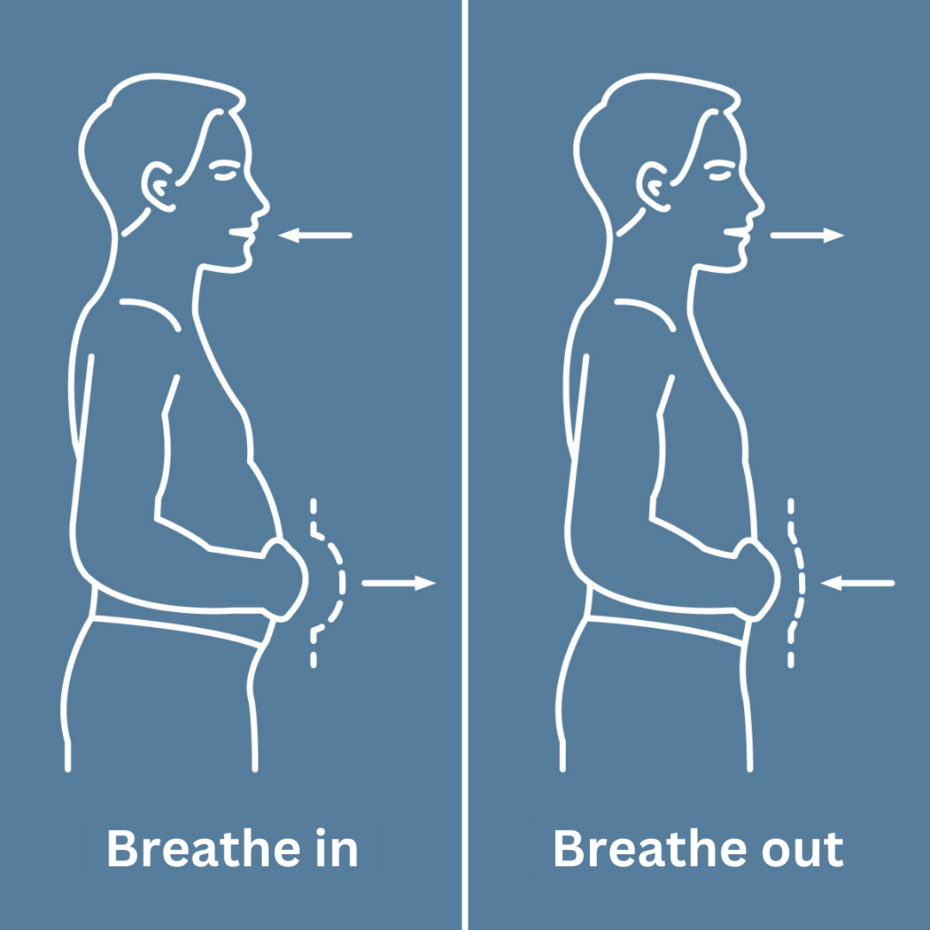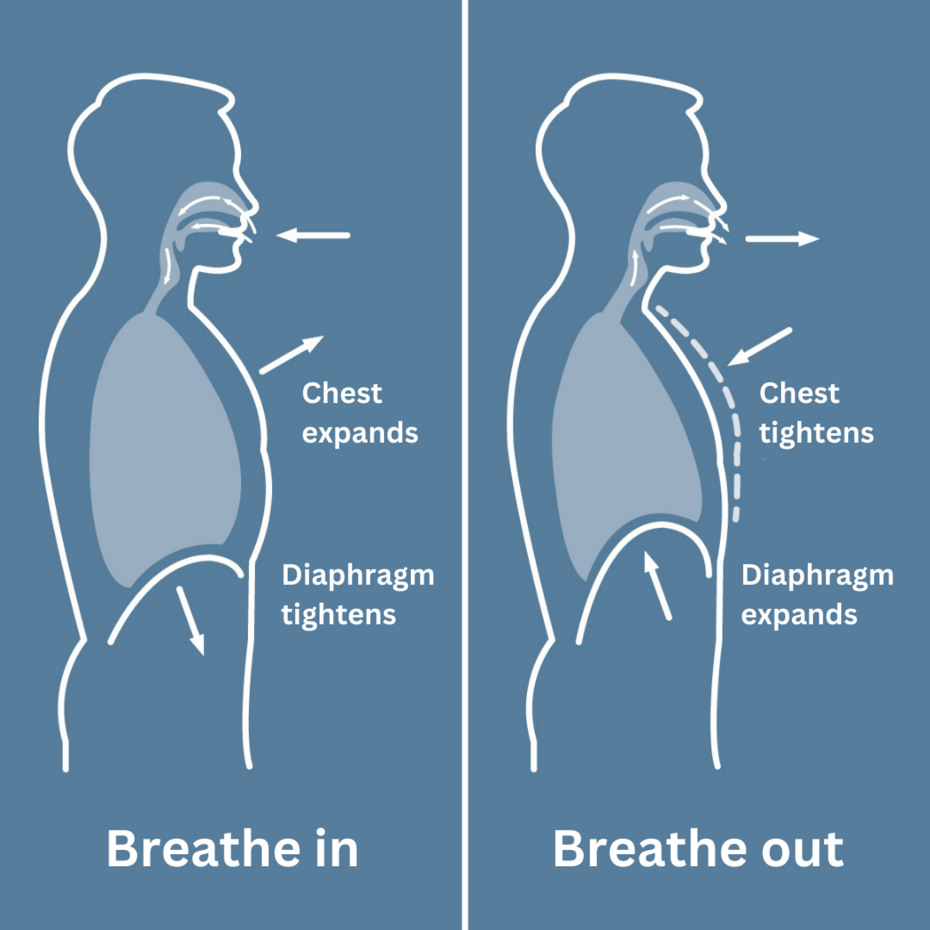Abdominal breathing, also called diaphragmatic breathing, is based on calmly breathing in and out. We use the entire volume of our lungs when we practise deep abdominal breathing. Physiotherapist and respiratory therapist Marlies Ziegler explains what abdominal breathing is and how to do it.
Over the course of our lives, we forget how to practise abdominal breathing or get out of the habit because this breathing technique pushes the belly out. Because of prevailing beauty standards, many people pull in their belly and then only breathe in their chest. However, abdominal breathing is considered healthier than chest breathing.
Abdominal breathing primarily involves the diaphragm. Abdominal breathing aims to bring air into the lungs in the most optimal and economical way as we breathe in. This air is then completely expelled as we breathe out.


If you are practising deep, conscious abdominal breathing for the first time or are not yet familiar with it, you should train lying on your back to start with. That helps you feel more easily and effectively how your abdomen moves. Your abdomen also needs space to expand without resistance (such as tight trousers or the edge of the table being too close).
When we practise abdominal breathing, the diaphragm stretches downwards and makes space for the lungs. Air and oxygen flow deep into the bronchial tubes and reach the bottom of the lungs. When we breathe out, the diaphragm relaxes and moves up. The old air flows out of the lungs.
With the hectic that is daily life or the beauty standard of a flat stomach, many people breathe too shallow and only fill the upper part of the lungs when they inhale. And yet abdominal breathing is considered a healthier breathing technique because it is more natural. For chest breathing, the respiratory support muscles have to work harder, which can lead to strain.
As a matter of principle, all of us should practise conscious breathing every now and then so that we do not forget how. All of us used the abdominal breathing technique when we were children. Anyone who has chronic respiratory diseases such as asthma, COPD, cystic fibrosis (CF) or primary ciliary dyskinesia (PCD) should definitely re-learn and practise abdominal breathing, as it helps calm and enhance breathing, especially if someone is short of breath or has a panic attack.
This article was written in cooperation with Marlies Zieger She works as a physiotherapist in private practice in Munich. She specialises in respiratory therapy. She has been treating patients with chronic obstructive and restrictive airway diseases such as asthma, COPD, cystic fibrosis (CF) and primary ciliary dyskinesia (PCD), for more than 20 years.
Note: The information in this blog post is not a treatment recommendation. The needs of patients vary greatly from person to person. The treatment approaches presented should be viewed only as examples. PARI recommends that patients always consult with their physician or physiotherapist first.
An article written by the PARI BLOG editorial team.
© 2025 PARI GmbH Spezialisten für effektive Inhalation